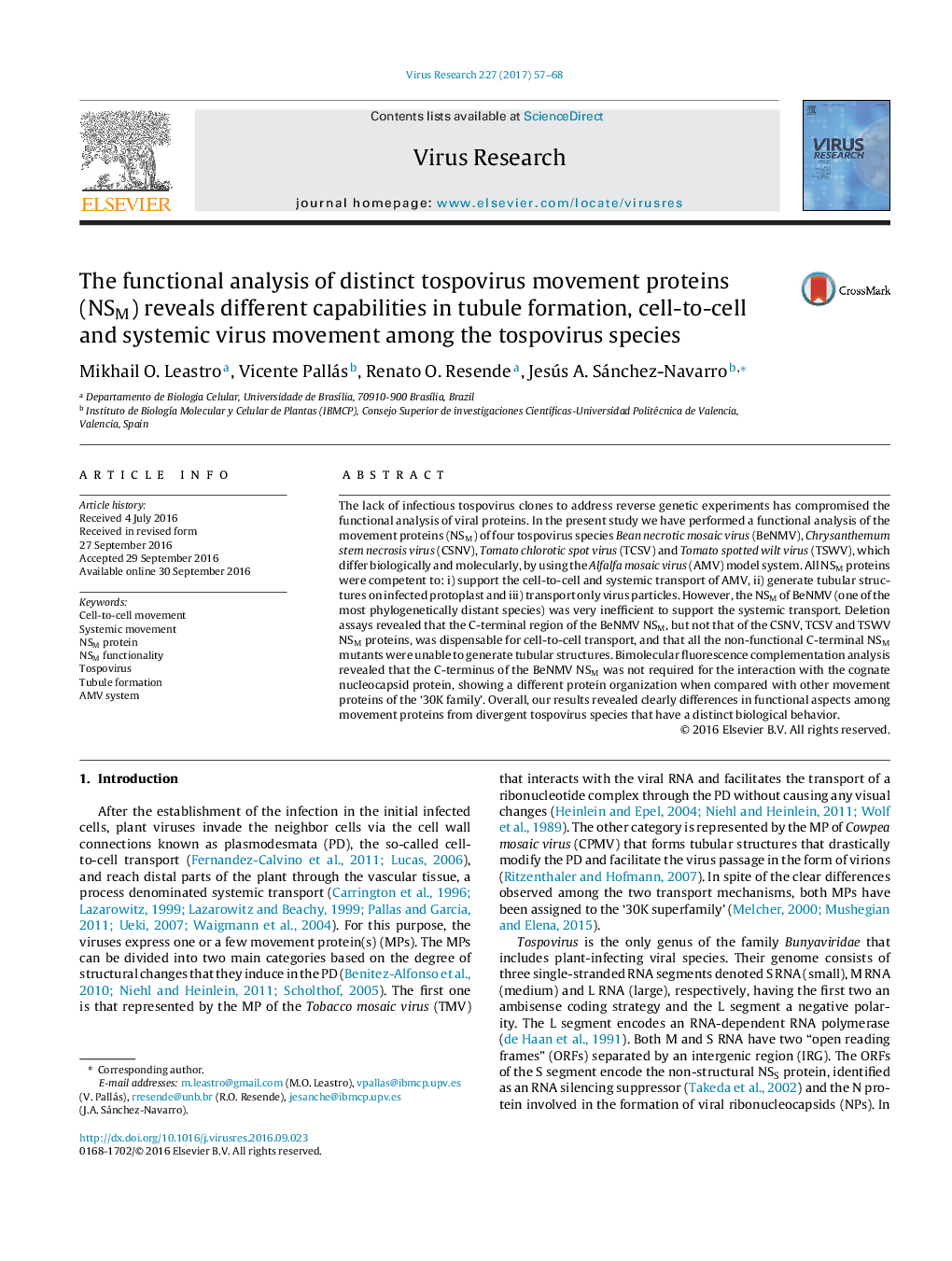| Article ID | Journal | Published Year | Pages | File Type |
|---|---|---|---|---|
| 5675478 | Virus Research | 2017 | 12 Pages |
Abstract
The lack of infectious tospovirus clones to address reverse genetic experiments has compromised the functional analysis of viral proteins. In the present study we have performed a functional analysis of the movement proteins (NSM) of four tospovirus species Bean necrotic mosaic virus (BeNMV), Chrysanthemum stem necrosis virus (CSNV), Tomato chlorotic spot virus (TCSV) and Tomato spotted wilt virus (TSWV), which differ biologically and molecularly, by using the Alfalfa mosaic virus (AMV) model system. All NSM proteins were competent to: i) support the cell-to-cell and systemic transport of AMV, ii) generate tubular structures on infected protoplast and iii) transport only virus particles. However, the NSM of BeNMV (one of the most phylogenetically distant species) was very inefficient to support the systemic transport. Deletion assays revealed that the C-terminal region of the BeNMV NSM, but not that of the CSNV, TCSV and TSWV NSM proteins, was dispensable for cell-to-cell transport, and that all the non-functional C-terminal NSM mutants were unable to generate tubular structures. Bimolecular fluorescence complementation analysis revealed that the C-terminus of the BeNMV NSM was not required for the interaction with the cognate nucleocapsid protein, showing a different protein organization when compared with other movement proteins of the '30K family'. Overall, our results revealed clearly differences in functional aspects among movement proteins from divergent tospovirus species that have a distinct biological behavior.
Related Topics
Life Sciences
Immunology and Microbiology
Virology
Authors
Mikhail O. Leastro, Vicente Pallás, Renato O. Resende, Jesús A. Sánchez-Navarro,
